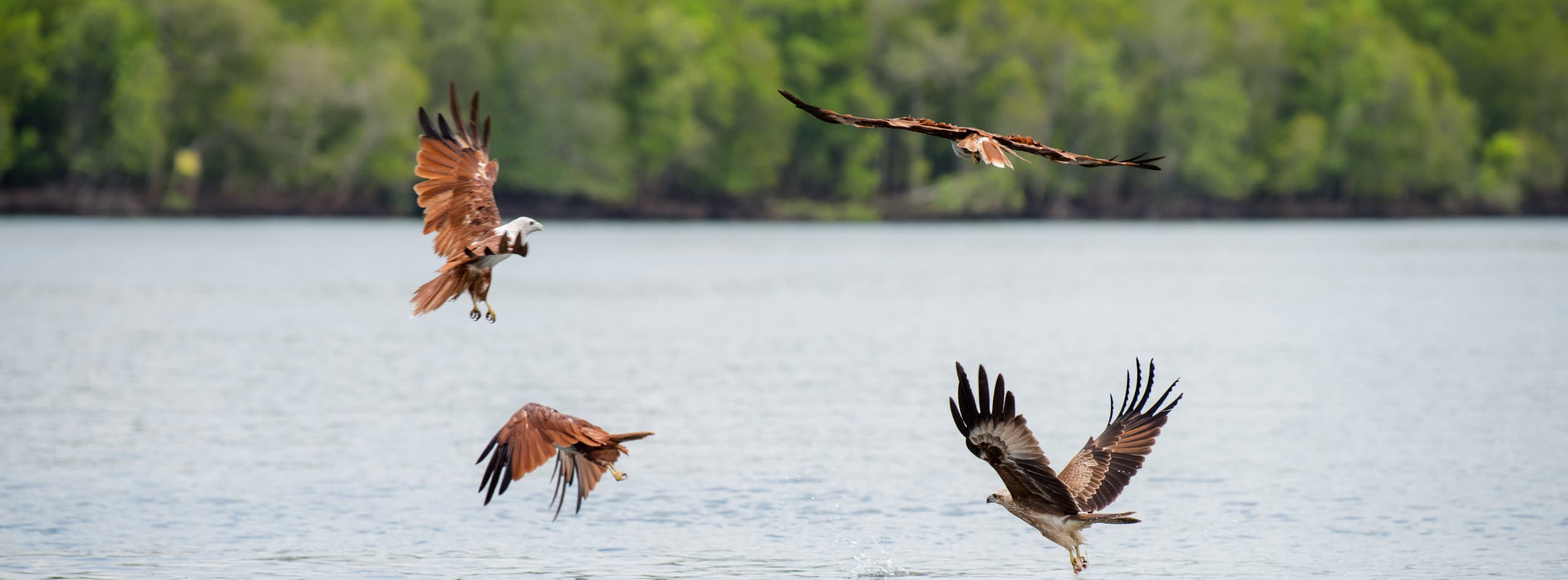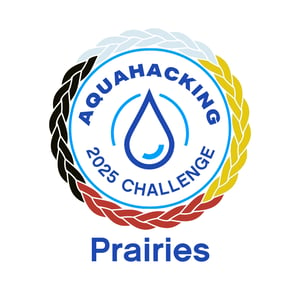
AquaHacking Challenge
PRAIRIES 2025
ORGANIZED BY
ABOUT THE CHALLENGE
Embark on a transformative 8-month journey of innovation and collaboration, where you'll join a community of passionate changemakers dedicated to water stewardship in Canada’s Prairie provinces. This year, the AquaHacking Prairies Challenge will focus on tackling critical water issues affecting the region’s vast and interconnected ecosystems, with a strong emphasis on weaving in Indigenous knowledge and collaborating with Indigenous-led organizations and community groups.
AquaHacking brings together students from multiple disciplines to find solutions to regional water issues and work together to innovate, inspire, and collaborate with local changemakers.
Through the AquaHacking Prairies Challenge, participants will gain access to mentorship, tools, and resources to transform innovative ideas into impactful startups that will benefit the environment, economy, and communities—both urban and rural.
Participants will compete for the following prizes: 1st place : $20 000; 2nd place : $10 000; 3rd place : $5 000; People's Choice Award: $1 000.
The official water issues tackled by the participants will be announced in April.
Have questions? Visit our Frequently Asked Questions (FAQ)
In many First Nation cultures, the Medicine Wheel is a holistic model that uses colors to represent the following:
Color: , Yellow , Red , Black , White
Direction:, East , South , West , North
Element: , Earth, Fire , Water , Wind
Season: , Spring, Summer , Fall, Winter
Medicine: , Tobacco, Cedar, Sage , Sweetgrass
Well-being:, Physical , Mental , Emotional , Spiritual
Stage of Life: , Infant /Child, Young Adult , Adult , Elder
It is important to know that medicine wheel teachings vary between Nations. The above example is from an Anishinaabe perspective. When the colors are incorporated into the braided circle, they carry the four directions, the elements of the environment, the seasons, sacred medicines, well-being and stages of life. At the center is balance and to live a good life and in harmony with one another.
Sweetgrass is a sacred medicine. In a sweetgrass braid, there are three sections comprised of seven strands each. These seven strands represent the seven sacred teachings of humility, truth, love, honesty, courage, wisdom, and respect. When we braid our ways of knowing together, we are sharing knowledge, respecting one another and doing our part for the environment, so that the seven generations ahead of us can enjoy fresh clean water for all life.
AquaHacking has helped us turn our technology into reality, as we have a lot of experience in the lab, but little in industry.
Maxinano
AquaHacking Great Lakes 2024 | Finalist
The biggest takeaway from the competition is that, quite simply, it's possible. We never thought we'd get this far, and then in the end, we're in the final, we've got a model, we've got a concept, and people are really receptive, it's incredible.
Modul'eau
AquaHacking Quebec 2023 | 1st place
Despite catastrophic environmental disasters happening around us, I say it’s not too late. I can make a difference for people who live in this lifetime and ever for people who will live after us. Who will address this issue if I don’t?
Eco-Water
AquaHacking Challenge Western Canada 2021 | 3rd place
It was interesting to speak to other teams during the expedition, and see the parallels between us, such as the difficulties we encountered as we worked on our solution.
Geomage
AquaHacking Quebec 2023 | 3rd place
The AquaHacking Challenge is a trampoline: the energy you invest is doubled in rewards — from invaluable knowledge to life-changing experiences.
Proto StLo
AquaHacking Challenge Great Lakes 2024 | 3rd place

Wednesday, April 30, 2025
12:00 – 1:00 PM (CST)

Wednesday, May 21, 2025
12:00 – 1:00 PM (CST)

Wednesday, June 18, 2025
12:00 – 1:00 PM (CST)

Wednesday, June 4, 2025
12:00 – 1:00 PM (CST)
WHY THE PRAIRIES?
The Prairie provinces, Alberta, Saskatchewan, and Manitoba, are home to some of the most critical and complex freshwater systems in North America. This vast region is shaped by three major drainage basins, seven heritage rivers, and Lake Winnipeg, Canada’s 6th largest lake, which supports ecosystems and communities across four provinces and four U.S. states.
However, the region faces significant challenges and threats. Prairie wetlands, among Canada’s most crucial ecosystems, are vital for biodiversity, flood control, and carbon storage; yet 70% of these wetlands have been lost in the last century. Additionally, agriculture and resource extraction—key regional economic drivers—contribute to fertilizer runoff, water contamination, and habitat degradation. Urbanization and population growth add further strain to water supplies.
To address these issues, it is crucial to work with Indigenous peoples to highlight and uphold Indigenous science, knowledge, and culture into sustainable practices and technology. There are many cultures, traditions and stories that tie Indigenous peoples to the land and waters of the Prairies. This knowledge is threaded with sacred natural laws.
By integrating Indigenous knowledge with clean technologies, we can develop more holistic, inclusive, and culturally relevant solutions that honor traditional ways of knowing and addressing the needs of future generations.
SPONSORS


ESTABLISHED BY
ACCELERATED BY

POWERED BY

.png?width=360&height=158&name=Glencore_black%20300ppi%20(1).png)

Have questions?
Others frequently ask…-
The Challenge is open to Indigenous and non-Indigenous students and young professionals aged 18 and over, residing in Canada.
-
Register on the registration platform before July 6th, 2025. You will be prompted to create an account. Carefully follow the instructions and keep an eye on your email inbox as you will receive your sign-up confirmation with further instructions. Remember to check your junk mail if necessary.
-
Participation in an AquaHacking Challenge is free.
There is no registration fee to take part in the Challenge.
-
There is no minimum or maximum. You can participate solo or form a team.
However, we strongly encourage multidisciplinary teams as well as collaboration between Indigenous and non-Indigenous participants.
-
Indigenous communities have made the prairies their home for tens of thousands of years. Today, Manitoba and Saskatchewan have the highest percentage of Indigenous population in Canada, and many Indigenous communities are on the frontlines of the climate and water crisis, especially those living in remote or rural communities. Our intention with this challenge is to work together with Indigenous-led organizations in a collaborative and co-designing capacity to ensure that the solutions presented in the Challenge are accessible, replicable and culturally appropriate for Indigenous communities and non-Indigenous communities alike.
-
We encourage the formation of diverse, multidisciplinary teams.
- You can invite your friends, classmates or peers to sign up for the AquaHacking Challenge and be part of your team.
- Once registered, you'll be able to
a) view the profiles of other participants and invite them to join your team
b) browse the profiles of existing teams and apply to join them
c) ask for help from our support team, which can facilitate introductions. - A virtual team-forming session will also help you find teammates.
- You can invite your friends, classmates or peers to sign up for the AquaHacking Challenge and be part of your team.
-
Projects or solutions must contribute to solving one of the water issues presented in this Challenge. They can be nature-based solutions, biotech solutions, and technological solutions (hardware and software) based on digital tools, information technologies, programming, artificial intelligence, engineering or robotics, etc. Solutions cannot be regulatory in nature nor do we accept major infrastructure projects.
-
The AquaHacking Challenge is open to anyone who wants to have a positive impact on water, whatever their field of study or expertise. We strongly encourage the participation of multidisciplinary teams. Although the AquaHacking Challenge ultimately leads to the creation of a startup, we respect the fact that some participants will not continue the adventure after the Challenge, which is why we award certification to the finalists to recognize their contribution.
-
The AquaHacking challenge is designed to serve as a launchpad for the development of your entrepreneurial project. You have the freedom to choose the legal form of your startup, whether it's a non-profit organization, a social enterprise, or an incorporated company. Whatever form you choose, it's essential to ensure the sustainability of your solution and your startup by drawing up a solid business plan and a clear development plan.
-
You don't need to have an idea or a solution before you register. All the necessary resources will be made available to participants in order to proceed with the ideation and development of their solution.
-
- The AquaHacking Prairies Challenge lasts 8 months (from June 2025 to January 2026).
- Participants should anticipate allocating 3 to 5 hours per week to the development of their solution and startup project.
- It is entirely possible to balance one's studies and/or full-time work with participation in the Challenge.
-
If you'd like to find out more and browse through some of the solutions that previous AquaHacking participants have worked on, please visit https://aquaaction.org/en/our-programs/aquahacking-challenge/past-aquahacking-challenges
-
Semi-finalist teams who are not selected to advance to Phase 2, and whose Challenge ends after the Semi-Finals:
- Receive a certificate of participation
- Are encouraged to continue developing their solution and startup with the support of the AquaAction team.
Finalist teams who have completed the Challenge and pitched at the Finals in February 2026:- Receive certification and micro-credits.
- Receive start-up seed funding (TOP 3 only).
- Join one of Canada’s top startup incubators.
- Access personalized legal support.
- Join AquaNation and benefit from visibility, networking, financing, and business development tools and opportunities.
- Ultimately, they will be eligible to join AquaAction's AquaEntrepreneur program to run pilot projects.
-
If you are interested in becoming a mentor, judge or partner, please contact the AquaAction team at info@aquaaction.org.
-
Indigenous peoples have made the prairie their homeland since time immemorial. Historically, Indigenous communities would have summer and winter camps by the water. They would travel great distances to hunt, trap, forage plants and medicines, and fish in the Prairies. There are many cultures, traditions and stories that tie Indigenous peoples to the land and waters. This knowledge is threaded with sacred natural laws. The health of the water is the lifeblood of all people.
-
The AquaHacking Prairies Challenge lasts 8 months (from July 2025 to February 2026).